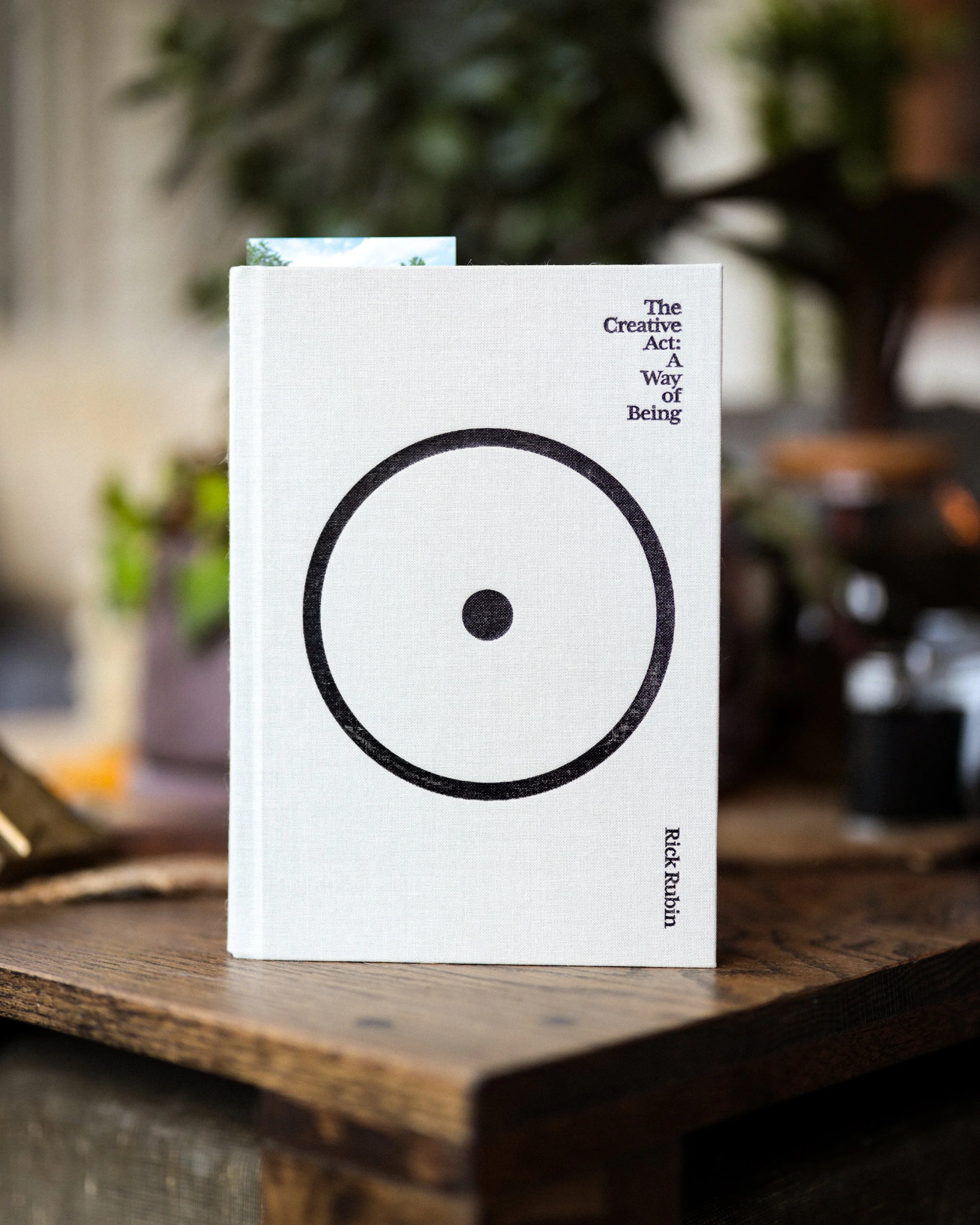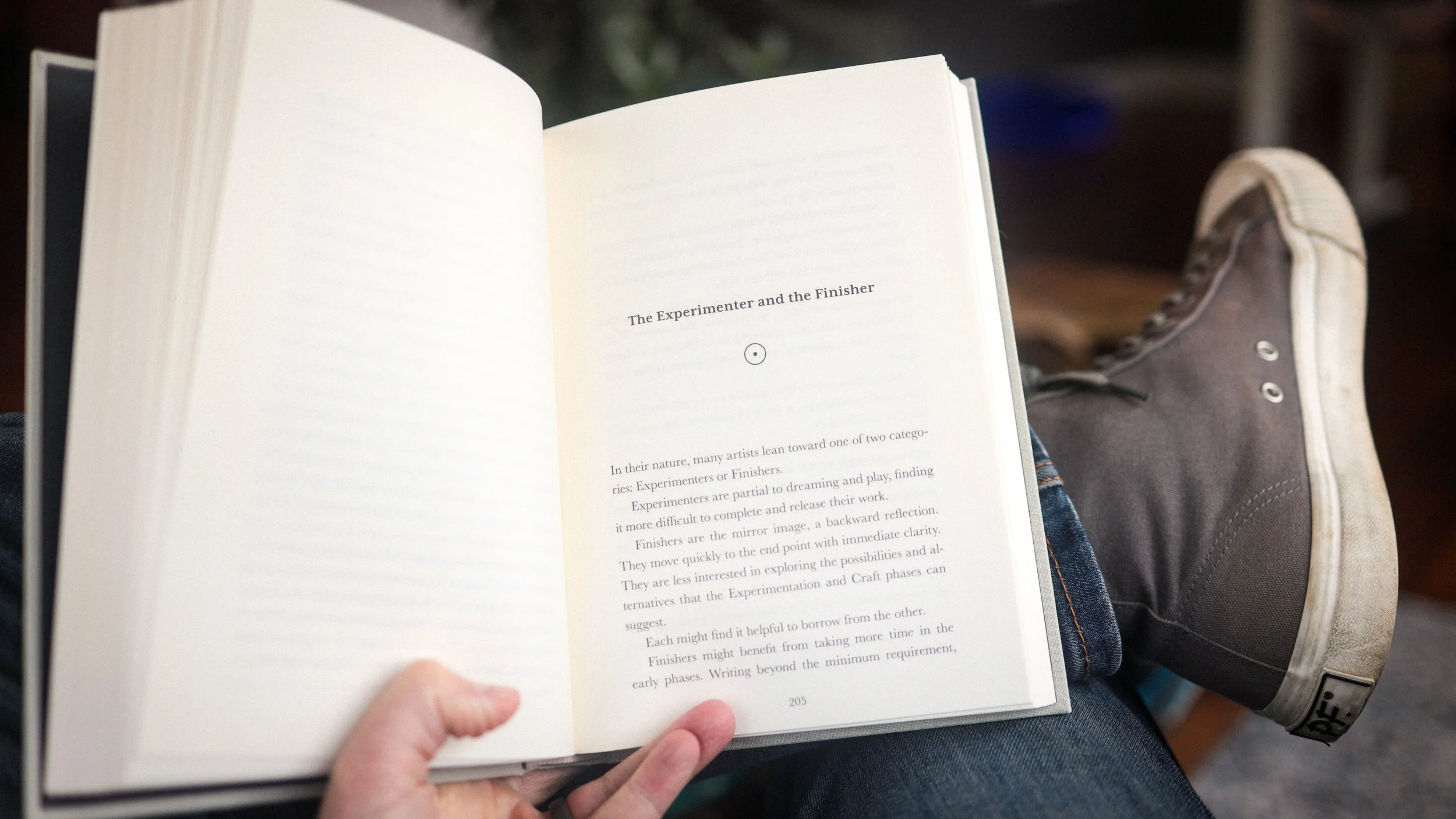Modes of Making: Experimenter / Finisher
When I was a kid, I was always creating. I’d build imaginary worlds with my action figures, constantly changing things around to make the story better. I remember making my own board game (or at least the board) when I was around seven or eight and I recall drafting a comic book (okay, just the cover) with a group of friends when I was in middle school. I was always experimenting, always dreaming up something new, but finishing these ideas? Not so much.
The Creative Act: A Way of Being by Rick Rubin
As I got older, that started to feel frustrating. I saw other kids achieving - succeeding in sports and winning the game or learning an instrument and performing in front of a crowd. And I started to wonder if maybe I just wasn’t as talented because I didn’t tend to finish what I started. I would just... play. And for a long time, I saw that as a weakness.
But over the years, I’ve come to see the experimenter side of myself more positively. That openness to say “let’s just see where this goes” led me to attend college, leave college early, start a business, start a nonprofit, and take on countless projects that I would’ve never had the courage to attempt if I only valued outcomes over exploration.
In The Creative Act: A Way of Being, Rick Rubin describes this dynamic succinctly.
“In their nature,” Rubin says, “many artists lean toward one of two categories: Experimenters or Finishers.”
Experimenters are drawn to play, discovery, and possibility - but may struggle to find focus and finish.
Finishers prefer clarity, structure, and resolution - but may miss deeper opportunities along their direct path.
“Each might find it helpful to borrow from the other.” Rubin encourages us not to pick a side, but to understand both tendencies and to try integrating the one that doesn’t come as naturally.
Here are three things that have helped me find that balance:
1. Accept your natural tendency.
Start by figuring out where you land. Are you more of an experimenter or a finisher? And whichever you are - don’t beat yourself up about it. There’s nothing wrong with being someone who has a lot of open loops. And there’s nothing boring about being someone who prefers a direct path. Self-awareness and self-acceptance are the foundation. That’s where the real creative growth begins.
2. Practice the opposite mindset - on purpose.
Once you recognize your starting point, try taking on the other mindset as a deliberate exercise.
If you’re an experimenter:
Map out next steps
Get specific about how you’ll move a project forward instead of just imagining more possibilities
Set a deadline
Share your work before you feel like it’s finished
If you’re a finisher:
Allow yourself some messy, unstructured time
Brainstorm freely
Make a bubble chart with as many bubbles as you can
Follow loose ends without worrying about the result
You might be surprised what shows up when you deliberately operate outside what comes naturally to you.
3. Find complementary partners.
The most valuable people in my life lean in the opposite direction from me.
Jessica, my wife and business partner at Debbie’s Daughters and Zach, my 12 Stars Media and Hoodox cofounder, both lean toward clarity, stability, and having fewer unknowns. And that’s a gift. When I’m experimenting, they ask great questions that bring ideas back down to earth and help us think about how we're actually going to execute on those ideas. They keep things grounded. Both tend to bring steadiness, which is really, really great for somebody like me who has a high risk tolerance.
But I think they’d also say I bring something valuable to them: a willingness to push boundaries, challenge assumptions, and explore what else might be possible. That balance makes the work better, and the relationships stronger.
Speaking of relationships, if you’ve read this far, thanks for being a part of the conversation and community I’m building with Juxtapost. You seem like the kind of person who would also enjoy Rubin’s book, The Creative Act: A Way of Being. I recommend picking up a copy from your local, independent bookstore.
Next Steps:
🧠 Think about it - Where do you fall, experimenter or finisher?
💬 Talk about it - What’s helped you stretch toward the other side? Drop a comment below to share about it in the open or reply to one of my emails for some private accountability.
👉 Want more weekly reflections like this? Sign up for the email list to get each new Juxtapost in your inbox.

